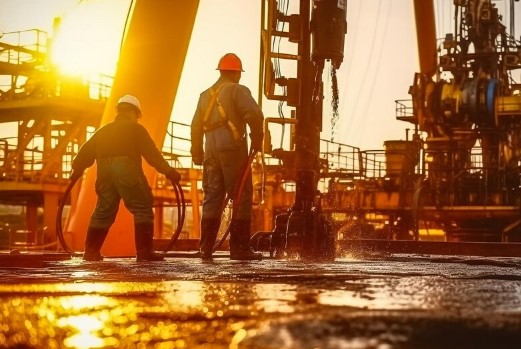How do Heat Tracing Systems Improve Oilfield Safety?
How do Heat Tracing Systems Improve Oilfield Safety?

In the challenging and often hazardous environment of oilfields, safety is paramount. Every aspect of operations, from extraction to transportation, demands meticulous attention to safety protocols. Among the array of technologies and practices employed in the industry, heat tracing systems emerge as a critical component in safeguarding both personnel and infrastructure. In this comprehensive exploration, we delve into the multifaceted ways in which heat tracing systems bolster safety standards in oilfield operations.
Understanding Heat Tracing Systems:
Before delving into their safety benefits, let’s grasp the fundamentals of heat tracing systems. Essentially, these systems are designed to prevent the freezing of pipes, tanks, and other equipment by maintaining a consistent temperature. They utilize either electrical or steam heat to achieve this objective, ensuring the seamless flow of liquids and gases in sub-zero conditions.
Preventing Freezing-Related Accidents:
One of the most immediate safety advantages of heat tracing systems is their ability to prevent freezing-related accidents. In oilfield settings, where temperatures can plummet dramatically, frozen pipes pose a significant risk. They can lead to ruptures, leaks, and even explosions, endangering both personnel and the environment. By maintaining optimal temperatures, heat tracing systems mitigate this risk effectively.
Ensuring Continuous Operations:
Oilfield operations often run around the clock, and any interruption can lead to costly downtime. Heat tracing systems play a crucial role in ensuring continuous operations by safeguarding against weather-induced disruptions. Whether it’s frigid temperatures or sudden fluctuations, these systems provide a reliable solution to maintain productivity levels without compromising on safety.
Minimizing Environmental Hazards:
The environmental impact of oilfield activities is a topic of considerable concern. Accidental spills, leaks, or ruptures can result in devastating consequences for local ecosystems. Heat tracing systems contribute to environmental protection by reducing the likelihood of such incidents. By preventing pipe failures due to freezing, these systems help minimize the risk of oil and chemical spills, preserving the integrity of surrounding habitats.
Enhancing Personnel Safety:
Oilfield workers face numerous hazards in their daily routines, and exposure to extreme temperatures is among the most pressing concerns. Heat tracing systems contribute to enhancing personnel safety by creating a more comfortable working environment. By eliminating the need for manual interventions to thaw frozen equipment, these systems reduce the risk of cold-related injuries and illnesses among workers.
Facilitating Maintenance and Inspection:
Regular maintenance and inspection are essential for ensuring the longevity and efficiency of oilfield infrastructure. Heat tracing systems simplify these processes by keeping critical equipment accessible and operational. By preventing the formation of ice and snow accumulation, these systems enable maintenance personnel to perform their duties safely and effectively, without the need for extensive preparatory measures.
Improving Energy Efficiency:
While safety remains paramount, efficiency is also a key consideration in oilfield operations. Heat tracing systems contribute to energy efficiency by optimizing the use of heating resources. By maintaining consistent temperatures precisely where needed, these systems minimize energy wastage, resulting in cost savings and reduced environmental footprint over the long term.
Adapting to Varied Applications:
Oilfield environments encompass a diverse range of equipment and infrastructure, each with its unique heating requirements. Heat tracing systems offer versatility and adaptability to cater to these varied applications effectively. Whether it’s pipelines, tanks, valves, or instrumentation, these systems can be customized to suit specific operational needs, ensuring comprehensive protection across the entire facility.
Meeting Regulatory Compliance:
Stringent regulatory standards govern safety practices in the oil and gas industry, with non-compliance carrying significant penalties. Heat tracing systems play a crucial role in meeting these regulatory requirements by mitigating potential hazards associated with frozen equipment. By adhering to industry best practices for heat management, oilfield operators can demonstrate their commitment to safety and environmental stewardship.
Investing in Long-Term Reliability:
In the dynamic landscape of oilfield operations, investments in safety and reliability yield enduring benefits. Heat tracing systems represent a sound investment in long-term operational resilience. By safeguarding critical infrastructure against freezing and associated risks, these systems contribute to the overall reliability and sustainability of oilfield operations, ensuring continued success in the face of evolving challenges.
Conclusion:
As the backbone of Western Canada’s oil and gas sector, G & R Insulating understands the paramount importance of safety in every aspect of operations. Heat tracing systems emerge as indispensable tools in this endeavor, offering a comprehensive solution to mitigate freezing-related hazards and uphold industry-leading safety standards. With their proven efficacy in preventing accidents, enhancing personnel safety, and optimizing operational efficiency, heat tracing systems stand as a testament to our unwavering commitment to excellence in serving the vital oilfield industry. As we continue to innovate and evolve, we remain steadfast in our mission to deliver superior insulation solutions that prioritize safety, integrity, and reliability, ensuring a safer and more sustainable future for oilfield operations across Alberta and BC.








